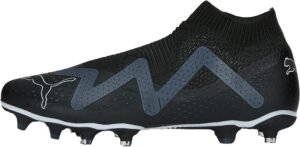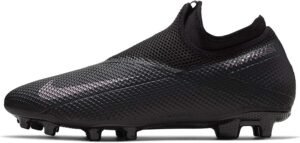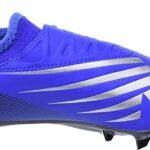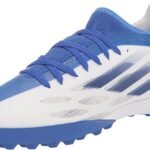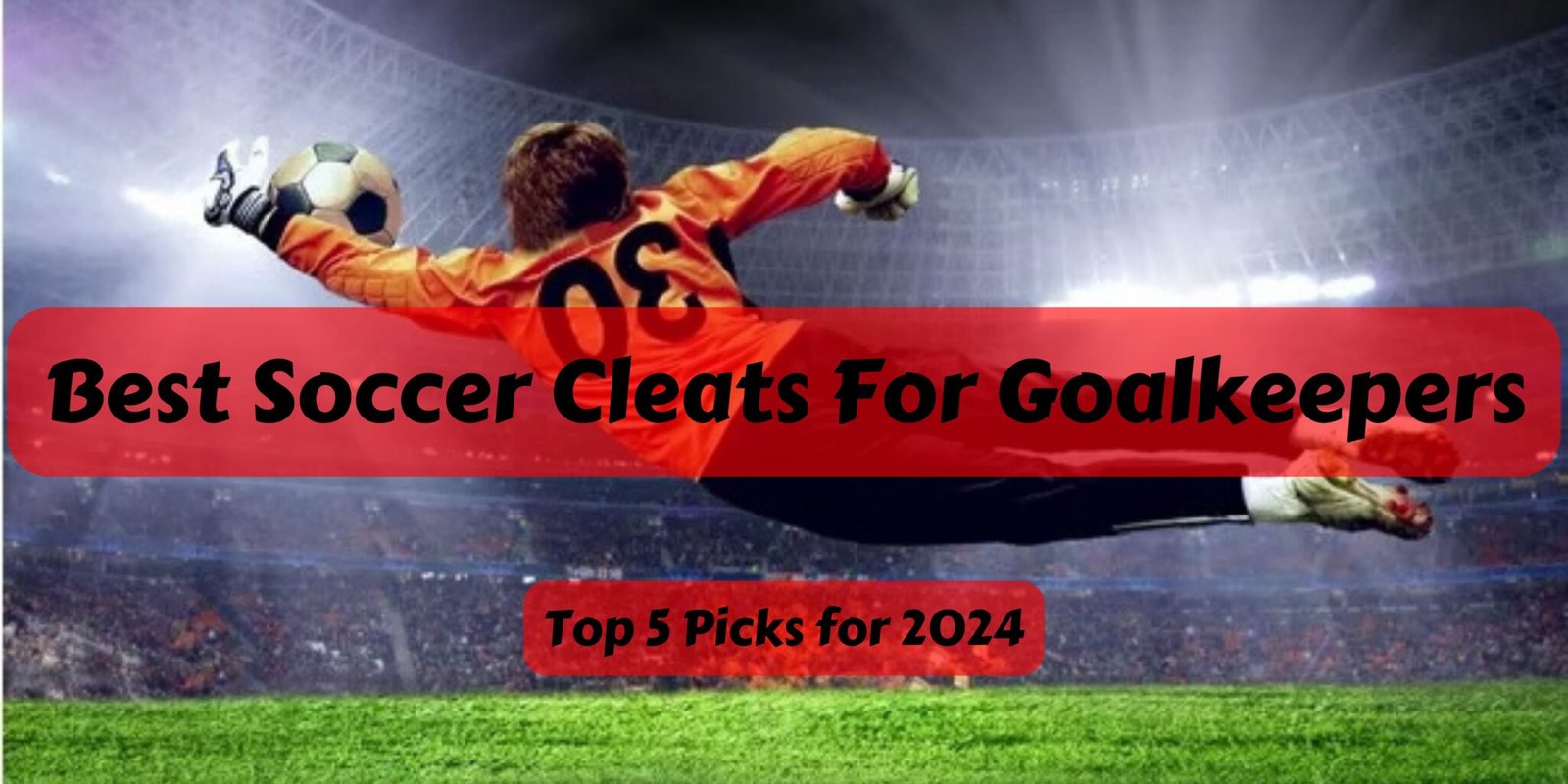
- Last Updated -
What are the Best Soccer Cleats For GoalKeepers?
Let’s dive right into a common question for goalkeepers:
What are the best soccer cleats designed for those who defend the goal? Sounds simple, right? But hold on—because the answer is far from ordinary.
Unlike strikers and midfielders, goalkeepers have unique needs when it comes to footwear. Think quick side-to-side movements and those incredible, game-changing leaps to make crucial saves.
Goalies need cleats that support their every move, and we’re here to help you find the perfect pair!
Best Soccer Cleats For Goalkeepers 2024 - Top 5 Picks
Affiliate Disclosure: Some of the links in this article may be affiliate links, which can provide compensation to me at no cost to you if you decide to purchase.
Best of the Best – adidas Copa Mundial
is arguably one of the most iconic soccer cleats ever manufactured. Since their initial release in the 1980s, they’ve become a timeless classic for goalkeepers, defenders, midfielders, and even attackers.
The Copa Mundial isn’t just a traditionalist’s delight but an embodiment of exceptional functionality that has stood the test of time.
The Adidas Copa Mundial cleat features a kangaroo leather upper that molds to the foot for excellent ball control and a superb first touch, ideal for players like Alisson Becker and Thibault Courtois.
It includes an oversized tongue for extra protection, cushioned pillows for comfort, and firm stitching for durability. Despite its classic design, modern technology is subtly incorporated, such as padded insoles for shock absorption.
Suitable for various positions, including goalies, defenders, and midfielders, it is also appreciated by referees for its comfort.
The Copa Mundial is a timeless legacy, valued for its performance over newer models like the Nike Tiempo Legend 9 and Adidas Predator Pulse.
Most Popular – New Balance V2 442
If one were to rummage through the locker of world-renowned goalkeepers like Alisson Becker or Thibault Courtois, there’s a good chance they might stumble upon a pair of New Balance V2 442 soccer cleats. These shoes are far from your run-of-the-mill variety.
Instead, they are specifically crafted for goalies who often have to switch from the role of defenders to attackers in a split second, making them the sweeper-keeper on the field. The first thing you’ll notice is the oversized tongue that not only offers additional protection but also improves ball control.
The New Balance 442 v2 cleats feature an instep panel for added control and depth when striking the ball, crucial for long clearances and precise passes. They include internal cushioned pillows for comfort and stability, enhancing fit.
These cleats stand out for their focus on comfort and durability without sacrificing style, made from superior synthetic materials that rival traditional options like Copa Mundial, Puma King Platinum, and Adidas Predator Pulse.
The insoles ensure comfort during long games, while the sleek black design with an ‘N’ applique adds a touch of sophistication. These cleats excel in passing, first touch, and defensive capabilities.
Best Premium – Adidas Crazyfast x.1
The Adidas CrazyFast Goalkeeper Cleats, inspired by the F50 Crazylight and X family’s speed, are premium goalkeeper footwear featuring lightweight design, advanced materials, and adaptability.
Weighing just 175 grams, the Crazyfast+ model offers a near-barefoot feel to enhance agility. Both Crazyfast+ and Crazyfast.1 models use the AEROPACITY Speedskin outer layer for a balance of lightness, durability, and control.
The Crazyfast.1 is available in laced and laceless versions, while the cleats showcase a stylish perforated three-stripe pattern. The Crazyfast.1 comes in a lemon-green gradient, and the Crazyfast+ in classic white with green accents.
These cleats excel in performance, comfort, and aesthetics for goalkeepers.
Best Value – PUMA Men’s Future Match
The PUMA Men’s Future Match soccer cleats are designed for performance and agility, featuring a FUZIONFIT360 upper with PWRTAPE support for a secure fit and quick movements.
The Dynamic Motion System enhances heel support for dynamic play, while engineered 3D textures at key contact zones improve ball grip for better control.
Their lightweight design boosts speed and responsiveness. Overall, these cleats offer a blend of comfort, support, and enhanced ball control, making them ideal for competitive soccer.
Editors Pick – Nike Phantom Vsn 2 Elite
The Nike Phantom VSN 2 Elite Soccer Cleats are an excellent choice for goalkeepers, combining modern design with advanced functionality.
They feature a refreshed aesthetic and improved performance, focusing on comfort with a snug fit for extended play. The Quadfit system provides exceptional foot lockdown and support for stability during quick movements.
Nike’s Flyknit technology ensures flexibility and breathability for precise control, while the Ghost Lacing System conceals laces for a cleaner striking surface and improved ball control.
These features make the Phantom VSN 2 Elite ideal for goalkeepers seeking advanced technology and comfort
Essential Goalkeeper Soccer Cleat Features
When it comes to excelling in the position of a goalkeeper, having the right soccer cleats is crucial. Goalkeeper cleats play a significant role in enhancing a goalkeeper’s performance on the field, providing them with the necessary features and capabilities.
To ensure you have the best cleats that suit your playing style and help you perform at your best, understanding the top goalkeeper cleat features is essential.
In this article, we will explore the must-have features for goalkeeper cleats, including traction and grip, comfort and stability, and the key components that make up superior goalkeeper cleats.
By familiarizing yourself with these features, you can make an informed decision when choosing the ideal cleats for your needs.
The Critical Role of Cleats in a Goalkeeper’s Performance
Understanding the Unique Demands of Goalkeepers
Goalkeepers have a unique role on the soccer team as the last line of defense. They require specialized skills and abilities to make crucial saves and protect the goal. Cleats play a critical role in supporting a goalkeeper’s performance by providing them with traction, stability, and comfort.
How Soccer Cleats Impact Goalkeeping Dynamics
The unique demands on goalkeepers, such as diving, jumping, and quick lateral movements, require cleats that can handle these dynamic movements effectively.
Soccer cleats impact goalkeeping dynamics by influencing a goalkeeper’s ability to move quickly, make accurate saves, and maintain balance and stability on different playing surfaces.
A Comparison of Different Soccer Cleat Brands for Goalkeepers
Brand | Key Features | Innovations |
Adidas | – Demonskin spikes for enhanced ball control | – Sock-style designs for improved fit and comfort |
Nike | – Flyknit uppers for lightweight support and precision touch | – Innovative stud configurations for optimal traction |
Puma | – Customizable lacing systems for a personalized fit | – Focus on agility and speed |
Traction and Grip: Must-Have Features for Goalkeeper Cleats
Traction and grip are crucial factors to consider when analyzing and selecting goalkeeper cleats. These features play a significant role in enabling goalkeepers to maintain stability and make quick movements on the field, ultimately enhancing their performance.
One key aspect that contributes to traction and grip is the design of the cleat’s studs or traction patterns. Well-designed studs or traction patterns provide better grip on the ground, allowing goalkeepers to move confidently without the risk of slipping or sliding.
The type and placement of these studs are essential considerations when evaluating cleat options.
In addition to stud design, the material of the outsole also influences the traction and grip of goalkeeper cleats. Different materials offer varying levels of grip and responsiveness on different playing surfaces.
Considerations such as durability and adaptability to different field conditions should be taken into account when examining the outsole material.
Furthermore, the overall design of the cleat, including its construction and shaping, can affect traction and grip. Cleats that are specifically engineered for goalkeepers and feature innovations to enhance grip can make a crucial difference in a goalkeeper’s performance.
Elements such as traction-enhancing technologies or specific contouring of the sole can contribute to improved grip and stability on the field.
When analyzing the traction and grip of goalkeeper cleats, it is important to consider the various features that contribute to this aspect, including stud design, outsole material, and overall cleat construction.
By prioritizing these must-have features, goalkeepers can select cleats that provide the necessary traction and grip to excel in their position.
Key Features for Traction and Grip in Goalkeeper Cleats
Feature | Description |
Stud Design | Well-designed studs or traction patterns for better grip on the ground. |
Outsole Material | Material that offers optimal grip and adaptability to different field conditions. |
Overall Cleat Design | Innovative construction and shaping to enhance traction and stability. |

The Balance of Comfort and Stability in Goalkeeper Soccer Cleats
Importance of Fit for Optimal Movement
When it comes to goalkeeper cleats, finding the right fit is essential for optimal movement on the field. A snug but comfortable fit allows goalkeepers to have better control and agility, enabling them to make quick and precise movements when diving, jumping, and changing directions.
The importance of fit in goalkeeper cleats cannot be overstated. Ill-fitting cleats can cause discomfort or hinder a goalkeeper’s movements, leading to decreased performance. Goalkeepers must try on different cleat models and sizes, ensuring they find the one that provides the perfect balance of snugness and comfort.
Many goalkeeper cleats offer adjustable features such as lacing systems or customizable insoles to provide a personalized fit.
These features allow goalkeepers to fine-tune their cleats to match their foot shape and preferred level of tightness. By investing time in finding the right fit, goalkeepers can maximize their mobility and overall performance on the field.
Advancements in Cleat Cushioning and Support
In recent years, there have been significant advancements in cleat cushioning and support technology, greatly improving the overall comfort and stability of goalkeeper cleats. These advancements aim to enhance a goalkeeper’s performance by reducing fatigue and minimizing the risk of injury.
Cleats now incorporate cushioned insoles that provide extra padding and shock absorption, reducing the impact on a goalkeeper’s feet during intense movements. This cushioning helps alleviate discomfort and allows goalkeepers to stay focused on making saves without distractions.
In addition to cushioned insoles, modern goalkeeper cleats feature supportive midsoles that help distribute the pressure evenly throughout the foot, enhancing stability and balance.
These midsoles provide a solid foundation for goalkeepers to push off and make explosive movements while maintaining control.
Furthermore, advancements in cleat design have led to the inclusion of padded ankle collars. These collars offer additional support and protection to the ankle, reducing the risk of sprains or twists when making quick lateral movements on the field.
Overall, the advancements in cleat cushioning and support have revolutionized the goalkeeper cleat industry, providing goalkeepers with the comfort and stability they need to perform at their highest level.
Advancements in Cleat Cushioning and Support | Benefits |
Cushioned Insoles | – Extra padding and shock absorption – Reduce foot fatigue |
Supportive Midsoles | – Even pressure distribution – Enhanced stability and balance |
Padded Ankle Collars | – Additional support and protection – Reduce the risk of ankle injury |
Key Components of Superior Goalkeeper Cleats
Superior goalkeeper cleats possess specific components that enhance a goalkeeper’s performance and provide the necessary support and capabilities. These key components include:
Traction and Grip:
Goalkeeper cleats are designed with specialized traction patterns and strategically placed studs to ensure optimal grip on different playing surfaces. This allows goalkeepers to maintain stability and make quick movements without the risk of slipping or sliding.
Comfort and Stability:
High-quality cleats prioritize both comfort and stability. They feature cushioned insoles, supportive midsoles, and padded ankle collars to enhance comfort throughout the game while providing the necessary stability for agile movements and quick reactions.
Durability:
Superior goalkeeper cleats are constructed using durable materials that can withstand the demanding nature of the position. They are designed to endure intense training sessions and competitive matches, ensuring longevity and reliable performance.
Protection:
Goalkeeper cleats incorporate protective elements to safeguard the goalkeeper’s feet. Reinforced toe boxes and supportive structures minimize the risk of impact injuries when saving powerful shots or colliding with opponents.
Synthetic vs. Leather: Which is Best for Goalies?
When it comes to goalkeeper cleats, there are two primary material options: synthetic and leather. Each has its advantages and considerations, and the choice depends on a goalkeeper’s personal preferences and playing style.
Synthetic cleats are often lighter in weight, making them ideal for goalkeepers who prioritize speed and agility. They are also more affordable and require less maintenance compared to leather cleats. However, synthetic cleats may lack the natural fit and feel that some goalkeepers prefer.
Leather cleats typically provide a better natural fit and feel, molding to the goalkeeper’s foot over time.
They often offer superior comfort and can provide a snug fit for optimal control and agility. However, leather cleats may require more maintenance and can be heavier compared to synthetic options.
In summary, both synthetic and leather cleats have their advantages, and the decision ultimately boils down to a goalkeeper’s personal preference, playing style, and desired balance of comfort, performance, and durability.
Conclusion
Choosing the ideal goalkeeper cleats requires considering key features like traction, grip, comfort, stability, and material composition. Understanding these elements helps in making an informed decision. Create a checklist prioritizing fit, traction, and comfort, and research reputable brands.
The right cleats can significantly enhance your performance and goal protection. Evaluate your options and playing style to make a decision that elevates your goalkeeping performance.(1)
FAQs – Best Soccer Cleats For Goalkeepers
What are the essential features of goalkeeper soccer cleats?
Traction, grip, comfort, stability, and material composition.
Why are cleats critical for a goalkeeper’s performance?
They provide traction, stability, and comfort for crucial saves and goal protection.
What unique demands do goalkeepers have?
Diving, jumping, and quick lateral movements.
How do soccer cleats impact goalkeeping dynamics?
They influence quick movements, accurate saves, and stability.
What must-have features should goalkeeper cleats have for traction and grip?
Well-designed studs or traction patterns and appropriate outsole material.
Why is the balance of comfort and stability essential in goalkeeper cleats?
To perform at their best without fatigue or injury risk.
How does the fit of goalkeeper cleats impact movement?
A snug but comfortable fit allows better control and agility.
What advancements have been made in cleat cushioning and support?
Improved comfort and protection with cushioned insoles, supportive midsoles, and padded ankle collars.
Introduction: Demystifying a Controversial Issue Soccer is a sport that requires specific...
Read More





